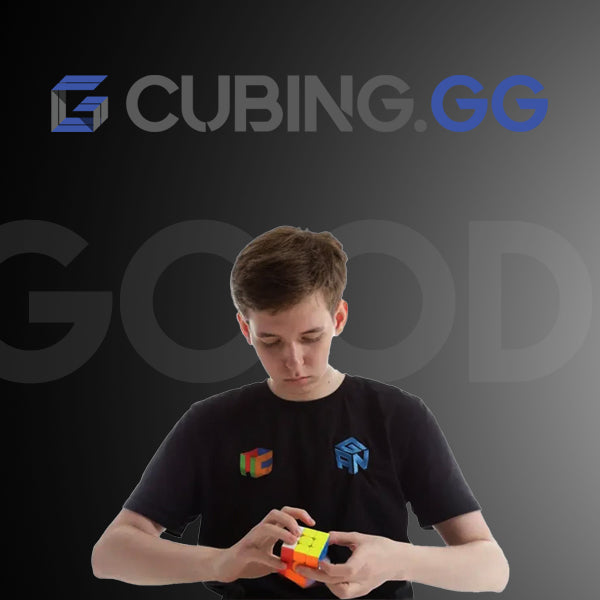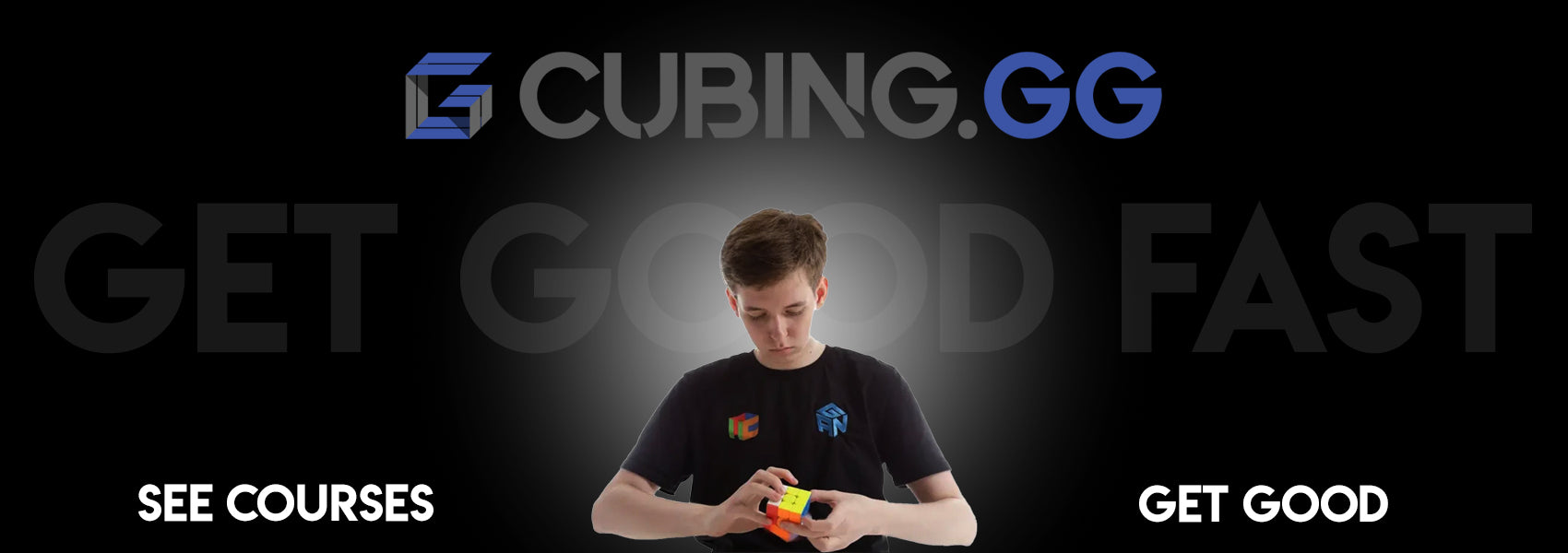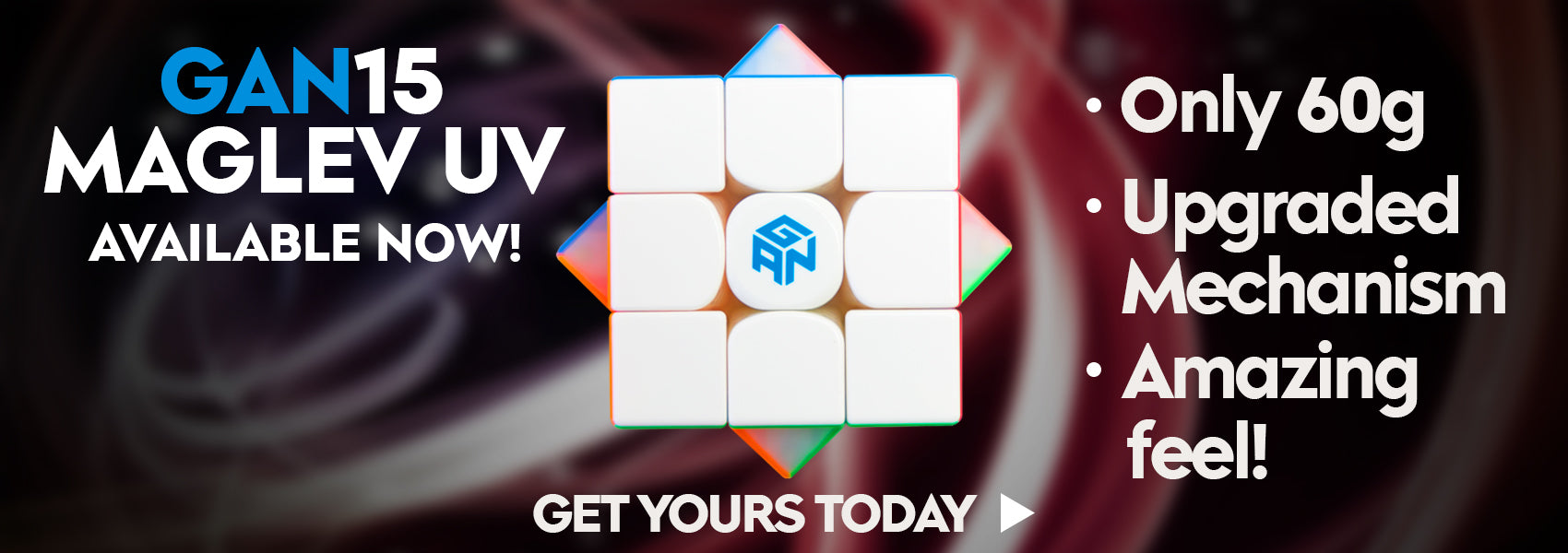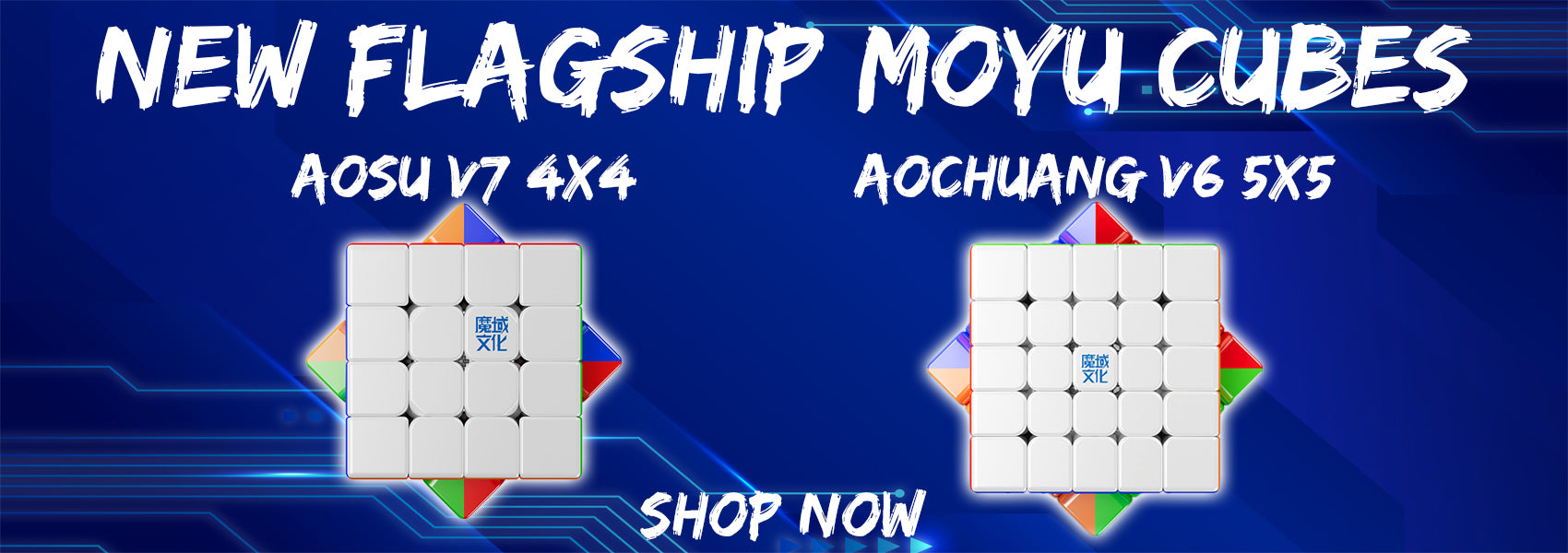How to Improve at Speedcubing?
Posted by DAMIAN BIAS on
Hello!
Interested in improving your speedcubing times? You’ve come to the right place! In addition to having an improvement roadmap for speedcubers at all skill levels, this guide includes a variety of useful tips and approaches to get your speed up and times down. Ready to get better at speedcubing? Dive in!
Important! What is your current skill level?
For most things, speedcubing included, the first step to improving is figuring out what your current abilities are. Good questions to ask yourself are:
- What method do you use?
- What algorithms do you know?
- What parts of your solve are you most proud of?
- What do you think you need to work on?
- What do you average?
Answering these questions can help you figure out what things you need to immediately learn to get better. Over the years, we’ve found that cubers at the same skill level have many things in common that they can improve. Learning and practicing things that are appropriate for your skill level is helpful for improving at a good pace. Done this way, you can avoid being confused, overwhelmed, or on the flip side, unstimulated. Here are some great general guidelines for cubers at various skill levels:
How can beginner speedcubers improve?
Beginner speedcuber: over 1 minute
Beginners are typically cubers who recently learned how to solve the Rubik’s Cube. Cubers who do not place much emphasis on learning algorithms or more advanced methods may also be considered beginners. Good thing is, improvement for beginners can be extremely rapid. Most beginners can experience noticeable improvement by just repeatedly solving the cube. If you’re a beginner and you set aside some time to practice, you’ll notice improvements in a wide variety of areas. You may discover certain combinations of moves that are fast to do. You’ll gain more familiarity with your method, making transitions from step to step quicker. You may also begin to develop a habit of looking for certain pieces while you’re solving! All of these things add up to help bring your times down!
Here is a video showing the differences between the thought processes of different levels of speedcuber. From beginner to expert, it is very interesting to see how each of them approach their solution.
How can intermediate speedcubers improve?
Intermediate speedcuber: between 15 seconds and 1 minute
This is a big and diverse group of cubers. Intermediate cubers are people who have formed a deliberate intention to get better and faster. One important thing for an intermediate speedcuber to consider is their speedcubing method. Most speedcubers use the CFOP method (from here on out, we’ll be discussing improvement in the context of the CFOP method). Speedcubers closer to the 1 minute time may want to begin learning F2L, a more efficient way to solve the first two layers of the cube. Cubers in this speed category are also recommended to start learning OLL and PLL, beginning with 2 look OLL and 2 look PLL. Cubers closer to the 15-20 second time benefit a lot from learning full PLL.
In addition to learning algorithms, intermediate cubers should pay attention to lookahead. If you’re trying to improve, one thing you can do is reduce the amount of time finding pieces by looking ahead. Looking ahead helps you identify the pieces you want to solve next. Once you find your next targets, you can transition into solving them without having to pause and check your cube.
Alongside lookahead, intermediate cubers should examine their technique. Your ability to turn fast without stopping becomes more important the faster you get. Examining technique also helps you shed some tendencies or bad habits you may have picked up as a beginner.
Last, intermediate cubers are encouraged to use a speedcube that complements their style. For recommendations, see our 3x3 quiz. You can also use lubrication to adjust the feel of your preferred speedcube. Getting a speedcube you’re happy with can make a huge difference. Cubers who are happy with their cubes not only perform better, but are more motivated to practice!
Here is a good resource for F2L cases you may be having trouble with.
http://algdb.net/puzzle/333/f2l
How can advanced speedcubers improve?
Advanced speedcuber: between 10 and 15 seconds
Advanced speedcubers are more experienced cubers with quite a bit of practice under their belts. Cubers at this skill level are expected to be able to solve cross efficiently, have a good grasp on F2L, look ahead while solving, and know full PLL. If you haven’t already done so, learning full OLL is very helpful at this stage.
Advanced speedcubers benefit most from refining details. At this stage, you should be checking how long it takes to solve each step of the CFOP method so you can discover inefficiencies and areas of improvement. Does one PLL algorithm take significantly longer to execute than another? Are there any OLLs that you can’t recognize immediately? Are you pausing too much while you’re solving F2L? How seamless is your cross to F2L transition? These questions, and many more, are questions advanced speedcubers ask themselves to determine the direction of their practice.
How can elite speedcubers improve?
Elite speedcuber: between 7 and 10 seconds
Elite speedcubers are highly experienced cubers that practice frequently with a hyper-focused intention to improve. Cubers at this caliber understand all the basics of their method and also incorporate additional algorithms and techniques like COLL in their solves like. These cubers are constantly on the lookout to find better algorithms and more efficient F2L solutions while drilling their existing algorithm repertoire and simulating competitions.
Elite speedcubers can improve by studying solutions of pro speedcubers, perusing algorithm databases, drilling algorithms, planning as much as possible during inspection, and combining deliberate, slow-paced practice with long periods of repetitive solving.
In this video Tymon Kolasinski walks through two solutions and gives you his insight on how to approach each one.
https://www.youtube.com/watch?v=eoMyUF_B7Tg
How can pro speedcubers improve?
Pro speedcuber: under 7 seconds average
What are you even doing here? Go practice.
Just kidding. Speedcubers at this level have global averages that are 6 seconds or better. Pro speedcubers are interested in addressing the finest details in their solves. Additionally, these cubers are incorporating larger, more powerful algorithm sets like ZBLL. Cubers at this skill level value consistency, focus, and excellent performance in high pressure, competitive situations.
Pro speedcubers have an innate motivation to practice and develop their own personalized approaches to improving.
Formulating a plan to improve
Now that you’re aware of some common areas of improvement for different speedcubers, it’s time to come up with a plan for yourself.
Are you an intermediate cuber around 30 seconds? If so, you may benefit from refining your F2L, practicing more efficient cross solutions, learning full PLL, and dabbling in OLL.
Are you pushing for a sub 10 average? For that, you’ll need to check your splits, make sure you have no glaring inefficiencies, know 2 look last layer well, and devote time to practice regularly.
Once you come up with a plan, make sure it’s doable in the short and long term. One way to structure your plan is to divide the things you want to learn into two separate groups: (1) algorithms; and (2) intuitive concepts. Algorithms are sequences of moves that you must memorize and practice repeatedly to refine. An example is a G Permutation. Intuitive concepts are moves or ideas on the cube that you can understand just by seeing an explanation. You can find many examples of this in intuitive F2L. Typically, you don’t need to memorize much in order to learn intuitive concepts. It should make sense once you take some time to experience it.
For beginner to advanced speedcubers, giving yourself a balanced share of algorithms and intuitive concepts is the key to maintaining a sustainable practice plan. That way, you can consistently progress without feeling stressed or behind.
What are some good places to learn more about speedcubing?
These are the two best sites to help you find the right algorithm. There are many options for each case, but the trick is to find the one that works for you and your turning style.
Use a timer to track your progress
Using a speedcubing timer to track your progress is a great way to check how well you’re improving. Speedcubing timers like CubeDesk and CSTimer give you fair scrambles, calculate your averages, and track your personal bests across all WCA events. Best of all, CubeDesk has beautiful data visualization features that you can use to see your improvement over time. It’s incredibly exciting and fulfilling to watch your times improve day-to-day, week-to-week, and month-to-month.
How do you structure speedcubing practice?
Practice makes perfect, especially in speedcubing. Speedcubing requires you to make multiple split second decisions while maintaining a fast-paced turning speed. It’s no secret that repetitive practice helps you get into that flow state.
One common question is: how much repetitive practice should I do versus deliberate, untimed training?
The answer to this depends on what you’re currently learning. If you’re in the process of learning new algorithms or intuitive concepts and are working on incorporating them into your solves, deliberate, untimed practice is likely the best choice. Not only does taking the timing aspect away minimize stress, it allows you to prioritize creative thinking and efficiency. Sometimes cubers find themselves defaulting to old habits in the heat of the moment. In an untimed environment, the motivation to do what is “right” trumps the urge to do what might feel convenient (but bad) in the short term.
On the other hand, practicing repetitively at full speed forces you to combine all the ideas you’ve learned in a timed environment. This type of practice tests whether or not you really know your stuff. Be sure to dedicate time to practice repetitively so that you can test yourself and continue to track your times.
As always, make sure that you maintain a healthy mindset when practicing. If it begins to feel like a chore or if you’re not happy doing it, reevaluate and consider taking a break.
Attend competitions
Besides scoring WCA official results, attending speedcubing competitions is a sure way to meet friends and get inspired. Most cubers at competitors are very friendly. You’d be surprised by how much you can learn by hanging out with your peers and watching top level cubers solve in competition.
The competition environment is extremely informative and seriously infectious. Cubers often say that attending competitions gives them a clear direction on what to work on because they can observe what works in pressure-filled official solves and what doesn’t. Solving aside, many cubers also love the competitive spirit and use it as motivation to continue practicing.
Find competitions close to you here: https://www.worldcubeassociation.org/competitions
Don’t stress and enjoy the journey
Speedcubing can definitely be frustrating if you’re not doing well. Mistakes, bad times, and not meeting goals always threaten to ruin an otherwise fun cubing session. That said, try your best to not worry too much if you’re not doing well. If you’re on a cold streak, remember that you can always take a break and then do more solves later.
Improvement in just about any activity relies on consistent, informed practice with a healthy mindset. This is especially true with speedcubing, a niche sport where paying attention to details and making good split seconds decisions are rewarded.
Improving in speedcubing can feel like a daunting task. However, with the right mindset, a good plan, and hard work, you may just surprise yourself with new skills and great times.
We hope you found this guide useful!












